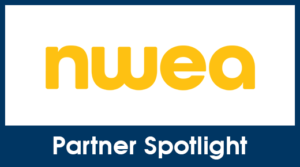By Tami Hunter
 As a content designer on the NWEA® Professional Learning team, I’ve had the opportunity to observe a variety of learning experiences for teachers. One from this past year stands out.
As a content designer on the NWEA® Professional Learning team, I’ve had the opportunity to observe a variety of learning experiences for teachers. One from this past year stands out.
A group of first-grade teachers had arrived at a session to learn more about using the Learning Continuum in MAP® Growth™ to help guide responsive lesson planning. At the start, they were unfamiliar with the content and were unsure what to expect. Only 45 minutes later, light bulbs had gone off, ideas had been sparked, and the teachers were headed back to their classrooms chattering excitedly about plans they now had for their students.
By providing teachers with small segments of focused learning, […] we increase the likelihood that teachers learn and grow.
Why was this learning experience successful? I believe it’s because of three key characteristics I see being used more and more often in effective teacher professional development: the session was short and focused, teachers worked with their team, and they were able to use what they learned right away.
1. Keep the learning short and focused
While full- or half-day learning opportunities can be great chances to learn, it’s getting harder and harder to find the time and budget to make those happen. Instead, learning happens in staff meetings, during collaboration blocks, or during a team planning period. Those small segments of time can be both convenient and effective times for learning.
By using an established meeting time, teachers don’t have to change their schedules or put in extra hours. In the session I attended, learning was focused on a particular outcome: selecting statements from the Learning Continuum that relate to an upcoming lesson. Having that specific learning goal identified made it easier for the facilitator to guide the conversations toward that outcome, so the time was used effectively. A focused session can also make it easier for teachers to remember and apply their learning.
2. Make learning a team sport
Learning with an established team can greatly enhance a learning experience. The teachers I observed clearly trusted each other and were comfortable working together. They knew each other’s students and were able to talk specifically about what might work for a particular child.
Working with a team provides a place to share ideas, brainstorm, and get feedback. It also allows for some of the good kind of peer pressure; we’re more likely to follow through with trying something new if we know that we’ll be expected to share a result with our team.
3. Empower teachers to take action
Children and adults learn best when the learning is relevant—when they can make direct connections to how they will use the new learning in their lives. At the session I attended, teachers were working on a lesson they were already planning to teach their students, so they had an immediate connection and opportunity to practice.
When learning is relevant, it often results in a change in behavior, whether it’s an adult who makes a healthier snack choice after a talk with their doctor, a student who is now able to complete a new math problem, or a teacher who adjusts a lesson based on an identified student need. Effective professional learning equips teachers with inspiration, resources, and knowledge they can actually use in their classrooms.
When teachers learn, students learn
By providing teachers with small segments of focused learning, allowing them to collaborate with their team, and making connections to actions they can take in their classrooms, we increase the likelihood that teachers learn and grow. As a result—and most importantly—their students will have the opportunity to learn and grow as well.
